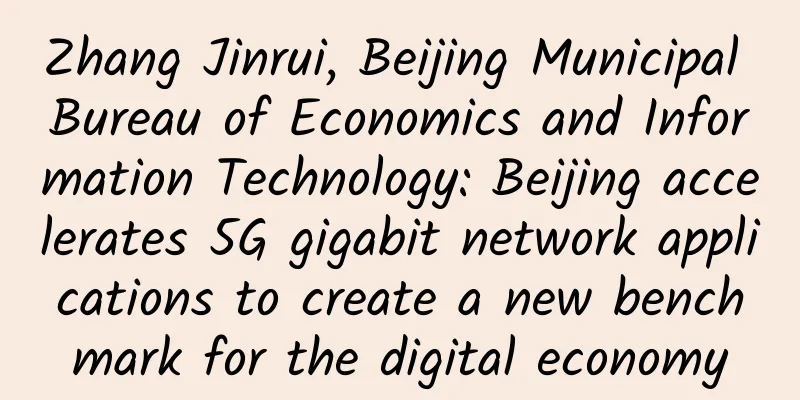Talking about new IP technology in data centers

|
Ethernet technology, also known as IP technology, has been around for nearly 40 years and has never changed. However, with the emergence of new application technologies such as cloud computing and big data, the network part has become a bottleneck and has great limitations. In order to cater to these new applications, network technology needs to change, and the network of the data center must become more agile, dynamic and automated. This new network is called new IP technology, which describes a highly virtualized IP network. It uses software-defined networking and network function virtualization to build a highly virtualized IP network, integrating virtualization and software network services, and running on commercial hardware. New IP can enable data centers to reduce total costs, create new services, and provide new ways to make money using the network. It is the second revolution in the world of network technology. New IP technology has four layers: physical bottom layer, network services, control services, and orchestration. Network virtualization and software-defined networking are achieved through these four layers. Let's talk in detail about what the four-layer network technology of new IP is. Physical Base The new IP technology is still a hardware-based technology that cannot be separated from the physical bottom layer. All virtual software still needs to run on physical devices. In the past, network giants were traditional hardware manufacturers. With the emergence of new IP technology, the status of software has been improved, but no matter how important the software is, it cannot be separated from hardware and needs hardware as a basis. Many experts and scholars are also discussing whether the future network will not need hardware. Obviously not. Without hardware, all software network technologies are empty talk. What can be confirmed is that hardware also needs to be developed. The hardware itself must support automation and be able to respond to various automation tools at the control service or orchestration layer. It's just that the profits of the network hardware part will be taken away by software, so many network manufacturers emphasize the role of software more. They can get higher profits by selling software network technology, but the hardware bottom layer is still an important part of the new IP and cannot be replaced. Network Services Network services refer to network function virtualization NFV, which is promoted by service providers to speed up the introduction of new services on their networks. NFV has completely changed the way network services are configured and deployed. It needs to run on the industry-standard X86 hardware platform. The goal of NFV is to integrate network equipment types into standard servers, switches and storage in order to utilize simpler open network elements. NFV greatly shortens the time for network deployment. Network services such as network routing configuration, firewalls and load balancing can run and configure like virtualized applications. The launch of applications and associated network services can be completed almost instantly. Data center users no longer need to pay attention to how the underlying network technology is implemented. As long as the requirements are provided, the network part can be automatically deployed according to the requirements. Control Services The control layer is the core of the entire new IP and the "brain" of the new IP network, which is what we often call software-defined network SDN technology. Everyone is familiar with SDN technology. It was born in campus networks. Researchers wanted to be able to test applications without having to manually update software on each network device. So they used technologies such as separation control, forwarding functions, and centralized control to develop a "programmable" network using well-defined interfaces. This concept was later extended to data centers where server virtualization has been stable, and gradually formed a complete SDN technology. The real innovation of SDN lies in the ability to use a vertical application interface to allow a large number of SDN applications to communicate with the SDN controller, thereby determining how the network should respond. SDN has also changed the closed state of traditional network technology. Learning from the development model of Linux, the entire SDN technology is open source. There are open source communities such as OpenDaylight that share the latest developments in SDN technology. The purpose of SDN technology is also to eliminate differences in network hardware and form a unified hardware interface standard. SDN provides great flexibility for network design, planning and management. We can choose centralized or distributed control, match flow table entries when forwarding micro flows (such as campus network flows) or aggregated flows (such as backbone network flows), and choose virtual or physical implementation, which provides great flexibility and convenience for network design and deployment. Orchestration SDN mainly implements the controller part, and to truly realize the intercommunication between the controller and the hardware, orchestration is the most important. It sets the intercommunication standard between the two and realizes the interaction between the two through a common language. The most common are open source software technologies such as OpenStack and CloudStack. These software realize the intercommunication between the controller and the hardware, and can convert the controller's instructions into the language that the hardware understands and send them to the hardware. This implementation has a prerequisite, that is, the hardware part must understand the instructions sent by the controller, otherwise the two cannot form a linkage. It is for this reason that the network hardware part needs to form a unified standard to break the hardware barriers between various manufacturers. Orchestration technology is not complicated. It will specify some rules for interconnection and intercommunication, just like defining a new protocol message type, but what is needed is hardware support. Openflow is a typical representative of the current orchestration technology and has been widely recognized. In 2008, a forum on Openflow was established to discuss network innovation and design the future Internet. In order to prevent conflicts of interest among network manufacturers, this forum also prohibits participants from working for any network equipment manufacturer. However, this is also the reason why Openflow has not been widely used, because it has not received widespread support from network equipment manufacturers. Of course, network equipment manufacturers are also willing to promote the development of orchestration technology, but they are more willing to promote their own orchestration technology. In fact, all major network manufacturers are promoting their own Openflow technology, which can ensure interoperability with their own equipment, but cannot support other network equipment. Although they are all called Openflow, there are differences in implementation details. If this kind of technology is developed, the network will return to its original closed state, and many private technologies will emerge, which will not facilitate network interoperability. In any case, network transformation is imperative. New IP technology has created new opportunities not only for network vendors but also for data centers that deploy it. New IP technology is very different from traditional IP network technology. The curtain of network transformation has been opened. New IP technology will definitely gain more support and play a greater role in the construction of future data centers. New IP technology has ushered in the second revolution in the world of network technology. Let us work hard to learn this technology so as not to fall behind in future technology competition. |
<<: Huawei FusionServer RH8100 adds another option to the mission-critical server market
>>: Network cabling management issues in data center transformation and upgrading
Recommend
You are still 11 certifications away from being an IT boss
There is a saying that success is not difficult, ...
V5.NET: Korea/Hong Kong dedicated server 30% off monthly payment starting from 325 yuan
V5.NET is a business that provides independent se...
5G is here: Now how will we make it work?
They say honeymooning in Niagara Falls sets you u...
Learn the history of HTTP in 6 minutes
[[386748]] HTTP/0.9HTTP/0.9 was proposed in 1991 ...
Monaco becomes the first country to have full 5G coverage, supported by Huawei technology
According to foreign media reports, on July 9 loc...
What are the unique values of enterprise-level Wi-Fi Mesh networks?
Wi-Fi introduced mesh technology very early, and ...
Single Pair Ethernet (SPE) and its applications
Single Pair Ethernet (SPE) is a new Ethernet tech...
[Black Friday] TNAHosting: $9/year KVM-1GB/15G SSD/5TB/Chicago Data Center
TNAHosting's Black Friday promotion includes ...
my country's 5G terminal connections are approaching 420 million, and the digital economy is gaining momentum
[[423700]] The State Council Information Office h...
Ruijie Cloud Desktop solves financial development and testing problems and is praised by Yixing Rural Commercial Bank!
Technology drives the transformation of the times...
V5.NET: Hong Kong CN2 (HKTW-B3) limited 30% off, dual E5-2630L/32GB/1T SSD/10M CN2 monthly payment 625 yuan
V5.NET has announced a special event this month, ...
Smart building wiring, how to make a wise choice?
Smart building networks have many extremely speci...
What factors determine the price of HTTPS certificates?
In the era of big data, when information is trans...
11 Myths About Wi-Fi 6 and 6E
The Wi-Fi Alliance has unveiled two new versions ...
Enterprise Network Data Communication Solution Practice - EIGRP
Practical objectives: Through practical applicati...







![[Double Holiday] edgeNAT: VPS monthly payment 30% off, annual payment 40% off, US/Hong Kong/Korea CN2 VPS monthly payment starts from 42 yuan](/upload/images/67cabc93e4f35.webp)

